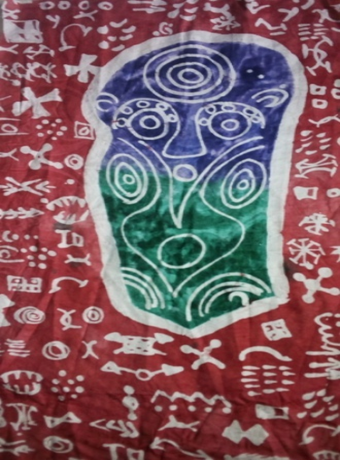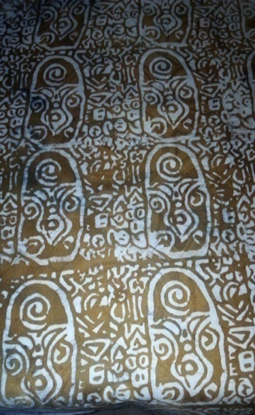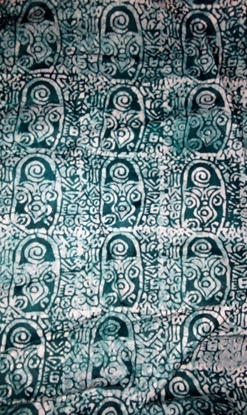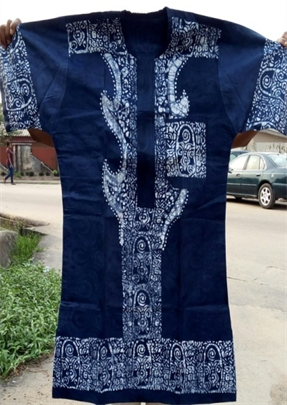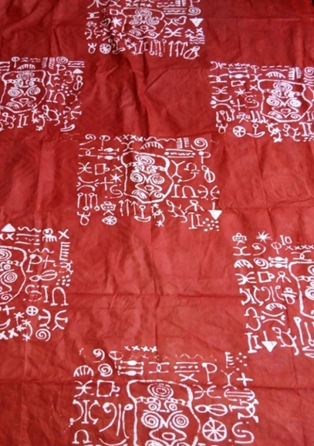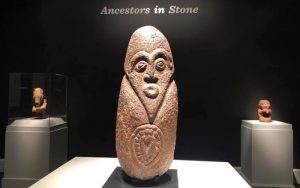
Akwanshi, c. 16th century, Stone, Ejagham artist, Nigeria, Museum purchase, Francoise Billion Richardson and Robert P. Gordy Funds, 2019.11
Umana Nnochiri is a textile artist and art educator at the Cross Rivers University of Technology in southeastern Nigeria. She adapts motifs from akwanshi (stone sculpture) of the Ejagham people of the Cross River region into fabric art using batik, a method of dyeing and wax-resist application practiced by cultures across the world. Her creations stand out as a cultural register and form a creative passion. Ndubuisi Ezeluomba, NOMA’s Françoise Billion Richardson Curator of African Art, spoke with Nnochiri about her practice with a focus on the artist’s akwanshi-inspired fabrics. In 2019, NOMA acquired one of these ancient stone monoliths, a physical form of ancestral veneration, which forms the centerpiece of the exhibition Ancestors in Stone.
Why did you choose to focus of the culture of the Ejagham people?
The various cultural ceremonies in the Cross Rivers state influence my work, including new yam festivals and fattening room ceremonies that culminate in an elaborate costume parade. The flamboyance of these events motivated me to look deeper into various cultural practices. I felt motivated to document these aspects of culture fearing that they may be consumed by the ravaging effects of modern influences—many young people and those influenced by Pentecostalism avoid these aspects of tradition. I thought of creative ways of documenting these cultural aspects of the people, and it was through fabric design that I was able to inscribe these happenings.
I designed dresses, blinds, and beddings using motifs of these festivals. I was further encouraged by the appreciation that my works received.
Another aspect of culture that also caught my creative interest was akwanshi. The history of the discovery of these stones has been documented locally and internationally. I have since devoted a lot of energy in the use of this motif in my works.
Furthermore, my practice is influenced by the Adire batik of the Yoruba people of southwestern Nigeria. I also take inspiration from the Adinkra and Kente fabrics of the Ghanaian people. Ukrainean culture and their decorated fabrics have also heavily inspired me. These influences are reflected in some of my akwanshi-inspired fabric designs.
Can you speak to us about the process of your fabric making?
First and foremost my akwanshi-inspired fabrics are testament to the significance of these stones to the people of the Cross Rivers region. It is also a show of the vibrancy and vivaciousness of the people and their positive attitude to the adoration of the ancestors.
In the buildup to my fabrics, I visit the sites of akwanshi stones and make sketches. These help to create the patterns and designs. My color palette is expansive, allowing me to achieve beautiful designs. These are first done on paper. Recently, I have also begun to use digital Corel draw to create designs and patterns.
To learn more about Umana Nnochiri and her batik fabric art, click here.
